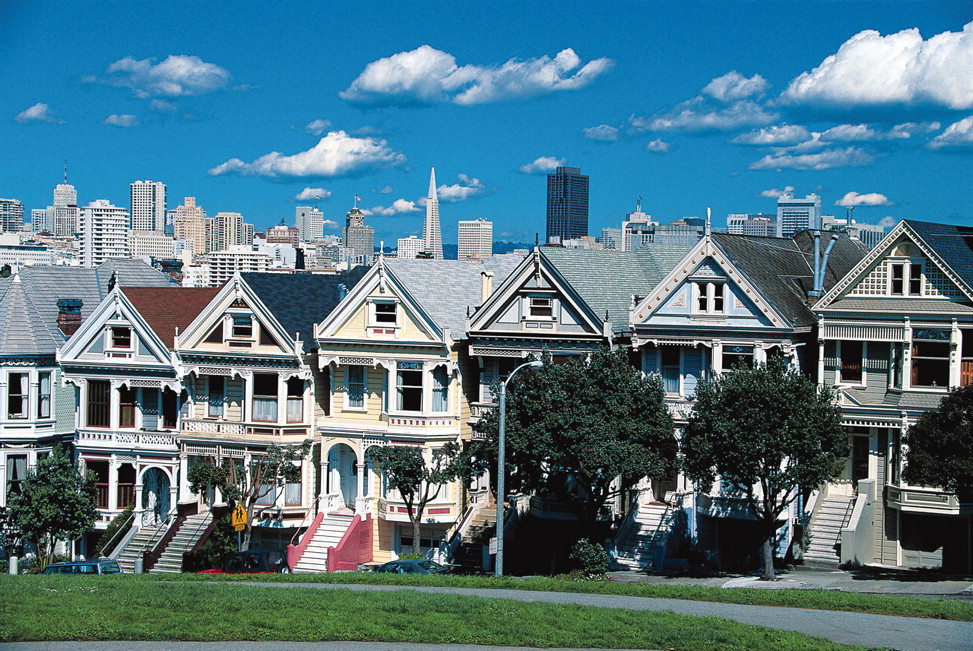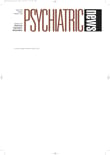San Francisco, countless people would agree, is one of the most beautiful cities in the world. It is built on a peninsula surrounded by the Pacific Ocean and San Francisco Bay. It offers spectacular views of undulating hills, sapphire-blue water, and the glistening Golden Gate Bridge.
Architecture, of course, also accounts for a fair amount of San Francisco’s visual appeal. The following is a brief description of some of the city’s most architecturally intriguing structures, starting with those built during the 19th century.
• The Octagon House, 2645 Gough Street: This eight-sided house was built in 1861 when it was thought that living in an eight-sided house would make a person healthier. The house has been restored by the National Society of Colonial Dames of America and operates as the West Coast’s only colonial museum.
•
The Painted Ladies, Alamo Square at Fulton and Steiner streets: From 1850 to 1900, about 48,000 houses in the style that is today called Victorian were built to accommodate San Francisco’s burgeoning population. Many of these houses were lost in the great fire that followed the 1906 earthquake, and others were torn down over the years to make way for new development. Nonetheless, thousands of these houses still stand, and many have been lovingly restored. Collectively they have come to be known as the “painted ladies” because of their elaborate color schemes.
The small area bordered by Divisadero Street on the west, Golden Gate Avenue on the north, Webster Street on the east, and Fell Street on the south has one of San Francisco’s greatest concentrations of these houses. However, the most famous painted ladies are a half dozen that can be seen from Alamo Square, at Fulton and Steiner Streets, with skyscrapers in the background. A photograph of this vista often appears on postcards and in travel guides.
• City Hall, 1 Carlton Goodlett Plaza (the stretch of Polk Street in front of City Hall): City Hall was built between 1913 and 1915 in the Beaux Arts (French Renaissance) style. The exterior granite came from the High Sierras. The dome was purposely built to be taller than the dome of the Capitol in Washington, D.C. Then came the earthquake of 1989, and the giant dome twisted like a bottle cap on its square base. The quake also divulged structural flaws and engineering deficiencies in the building. It took seven years to garner funds to repair the dome and to correct the flaws and deficiencies, but by 1999 the restoration and upgrades were complete.
• The Haas-Lilienthal House, 2007 Franklin Street (between Washington and Jackson streets): The Haas-Lilienthal House, built by a San Francisco merchant in 1886, is a classic Victorian mansion with elaborate wooden gables, a circular corner tower, and profuse ornamentation. It is open to the public.
• The Palace of Fine Arts, 3301 Lyon Street: The Palace of Fine Arts was built for the 1915 Panama-Pacific Exposition, which celebrated both the completion of the Panama Canal and the rebirth of San Francisco following the 1906 earthquake. It was modeled after ancient Roman ruins in Italy. It includes a pergola, an arch formed by rows of Corinthian columns, and a rotunda. Built to last only a year, however, these structures started to crumble, so during the 1960s they were rebuilt in concrete.
Today the palace is located in an idyllic park setting where visitors may stroll or picnic.
• The Castro Theatre, 429 Castro Street: The Castro Theatre was built in 1922. Today it is considered not just the finest example of an Art Deco 1920s movie palace in San Francisco, but one of the best preserved of its type in the United States.
The theater’s designer, Timothy Pflueger, borrowed freely from various historical styles, so that the theater, on the outside, somewhat resembles a Mexican cathedral. Inside, large areas of the auditorium walls are covered with classic-motif murals. On each side of the stage and screen hang two window-like grilled organ screens, back-lit with a pale amber light, and reinforcing the Spanish Colonial motif of the façade.
In 2001, the Nasser family—the family responsible for building the theater in 1922—again took over management of the theater. Under their direction, numerous improvements have been made. For instance, larger, more comfortable seats have been installed, and the stage has been expanded to accommodate live performances as well as film showings.
• Coit Tower, Telegraph Hill: This fluted 210-foot tower was built during the 1930s by the U.S. government’s Work Progress Administration, which created jobs for unemployed workers during the Great Depression. Murals inside the tower, which some maintain was built to resemble a fire-hose nozzle, depict lives of California laborers during the 1930s.
• The former Circle Gallery, 140 Maiden Lane, off Union Square between Geary and Post streets: This brick structure is the only building in San Francisco designed by the famous American architect Frank Lloyd Wright. It is said to have been a model for his designs for the Guggenheim Museum in New York City, with a circular interior ramp and skylights. The building currently showcases contemporary artists.
• The former Bank of America World Headquarters, 555 California Street: This building, dating from 1969, is covered with marble and carnelian—a tough kind of quartz with a reddish color. Its 52 stories are topped by a panoramic restaurant and bar, called the Carnelian Room. The focal point of the building’s plaza is an abstract black granite sculpture designed by the Japanese architect Masayuki Nagare and known locally as the “Banker’s Heart.”
• Transamerica Pyramid, 600 Montgomery Street, between Clay and Washington streets: This corporate headquarters, resembles a pyramid, was completed in 1972. It is 48 stories tall and capped by a 212-foot spire. Some San Franciscans consider the building an eyesore, but others like it, pointing out that it gives the San Francisco skyline of rectangular silhouettes some novelty.
• San Francisco Museum of Modern Art, 151 Third Street between Mission and Howard streets: This modernist building, designed by the acclaimed Swiss architect Mario Botta, opened in 1995. It has an elegant brick façade and striated turret. Inside, natural light falls through the circular skylight, illuminating the central atrium and a few nearby galleries. A catwalk stretches high above the atrium, offering museum goers a touch of adventure along with their culture. ▪

